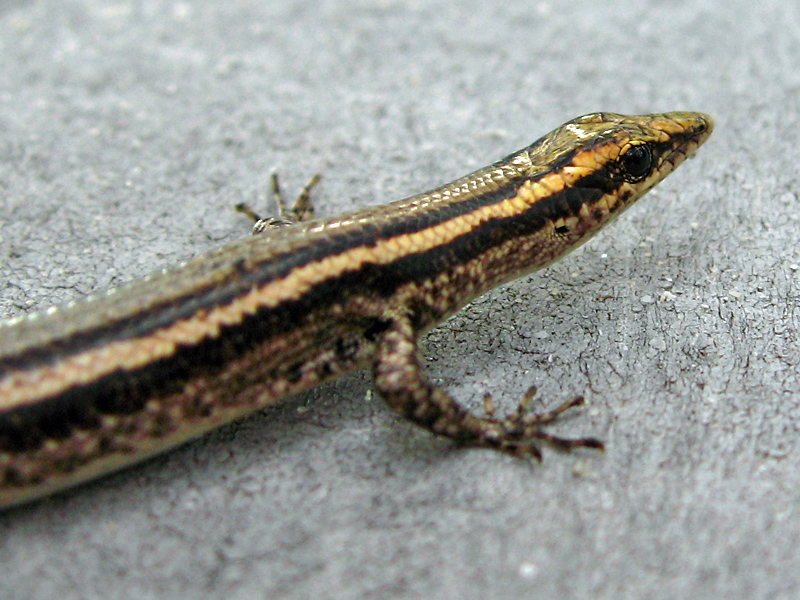
©Chris Bell: Cryptoblepharus virgatus on tree at picnic tables on Watson's Beach. 13 June, 2012. The tail of this animal was lost and is now regenerating.

©Chris Bell: Cryptoblepharus virgatus on picnic table at Watson's Beach. 13 June, 2012. Notes bold dark stripes that separate pale stripe on side of body.

©Chris Bell: Cryptoblepharus virgatus on picnic table at Watson's Beach. 13 June, 2012. Close-up of head and anterior body.
Colours
Distinguishing features
A dorsoventrally compressed (i.e., 'flat') species with a relatively gracile build. Five fingers and toes. Mid-back with a greyish color approximately two scale-rows wide; dark stripes on lateral and dorsolateral portions of body are separated by a pale stripe running from the back of the head to the base of the tail. All stripes are relatively well defined. Head often is copper-colored. With hand lens or microscope, plantar scales can be seen to be rounded and pale in color.
Size
- Up to 4 cm (Length of specimen) - applies to ; Up to 40 mm snout-to-vent length (SVL)
Synonyms
Distribution
Distribution and habitat preferences
Diurnal; found on tree trunks, low vegetation, among the debris along the high-tide line, and under cover objects such as logs, branches, bark, etc. Takes refuge under loose bark on standing trees. Also found in and around human habitation; can be seen sunning on the porches of the houses at the Research Station.
Local abundance
- Lizard Island, Queensland, Australia: This species is common on Lizard Island; It is easy to see on Watson's Beach, on the trees and in low vegetation near the picnic tables. It may also be found on the porches of the houses at the Research Station. It was reported to be common "in the dune areas behind the beaches" by Limpus (1982:2).
Web resources
References
- Limpus, C.H. (1982). The reptiles of Lizard Island, Herpetofauna, 13(2): 1-6. LIRS catalog number 73.

